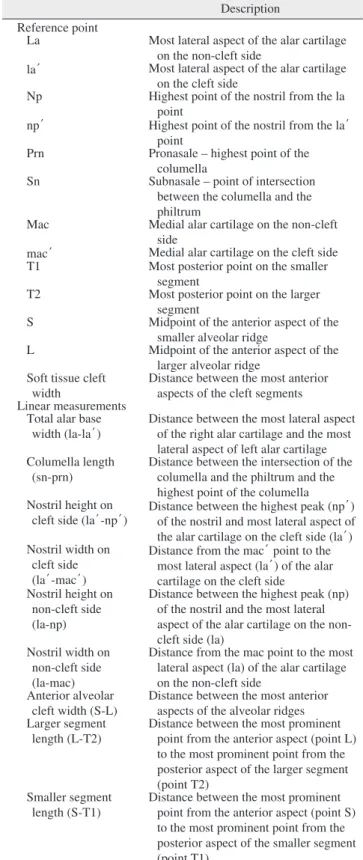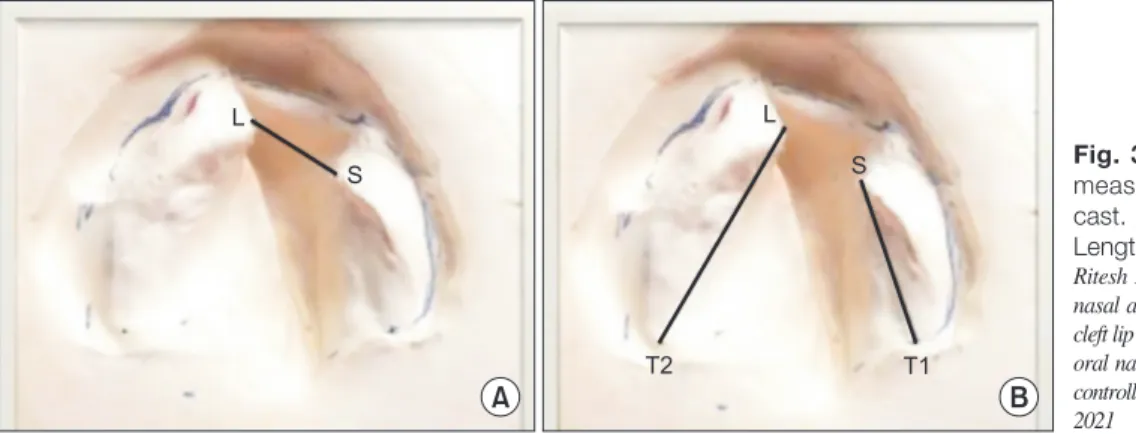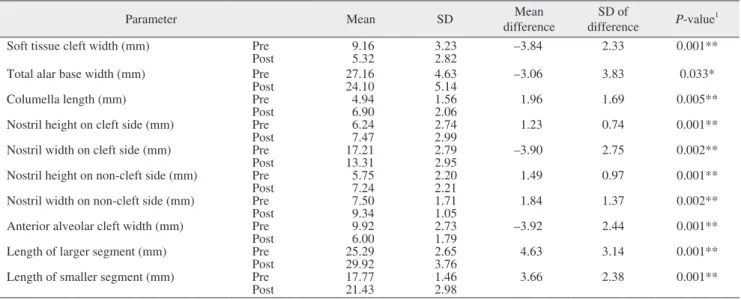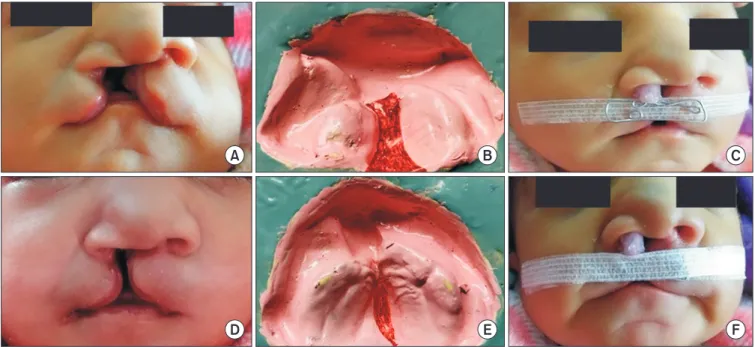I. Introduction
Cleft lip and palate (CLP) is one of the most common congenital deformities of the orofacial region 1 . It has a world- wide prevalence of 1.5 per 1,000 live births 2 and a reported prevalence of 1.10 per 1,000 in India 3 . CLP has a heteroge- neous etiology with both environmental and genetic factors playing important roles 4 .
CLP can be present as an isolated anomaly or as part of a syndrome or comorbid condition. Unilateral clefts are nine times more prevalent than bilateral clefts, and males are pre-
dominantly affected, with a ratio of 2:1 (male:female) 5 . The usual clinical features of unilateral CLP are disruption in the anatomy of the nose, lip, palate, and alveolar arch. There is discontinuity of peri-oral tissues, and the affected side of the nose presents with increased width of the nostril and a de- pressed alar rim. The columella and nasal tip deviate to the normal/unaffected side. The maxillary alveolar segments are also displaced to the lateral side 6 .
These patients also suffer from various medical problems such as difficulty with feeding, swallowing, nasal regurgita- tion, hearing problems (due to palatal muscle abnormalities), and speech difficulties (because of nasal escape and articula- tion problems) 7 . Cleft defects thus have an adverse influence on health as well as the social integration of affected indi- viduals. Despite early surgical intervention, residual defor- mity can remain through scarring and abnormal development of the face, which can result in functional and psychosocial problems 8 .
The traditional treatment for CLP involved multiple surgi- cal procedures, including secondary revision surgeries and
This is an open-access article distributed under the terms of the Creative Commons Attribution Non-Commercial License (http://creativecommons.org/
licenses/by-nc/4.0/), which permits unrestricted non-commercial use, distribution, and reproduction in any medium, provided the original work is properly cited.
CC





